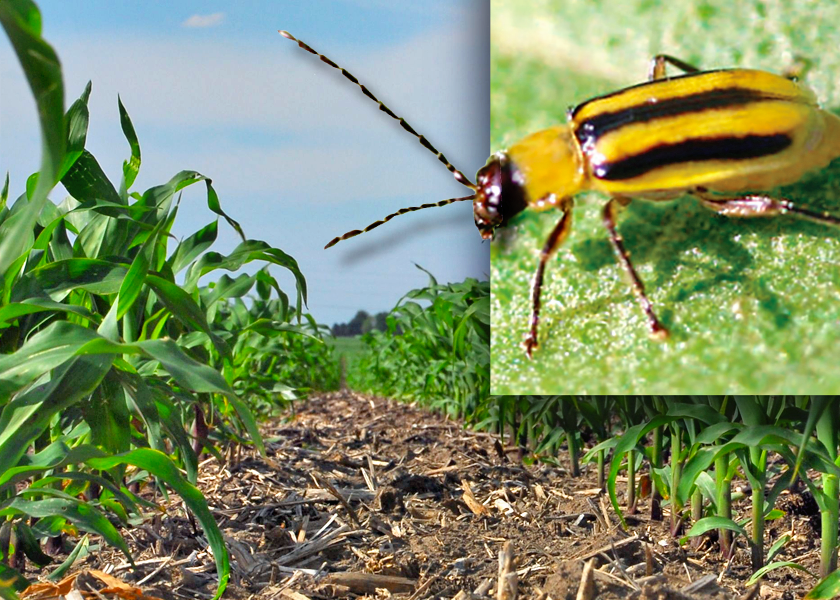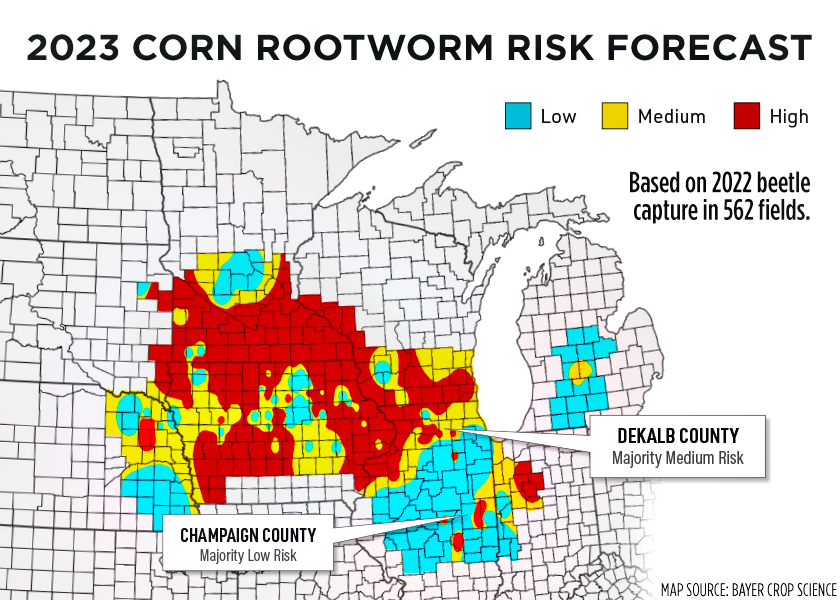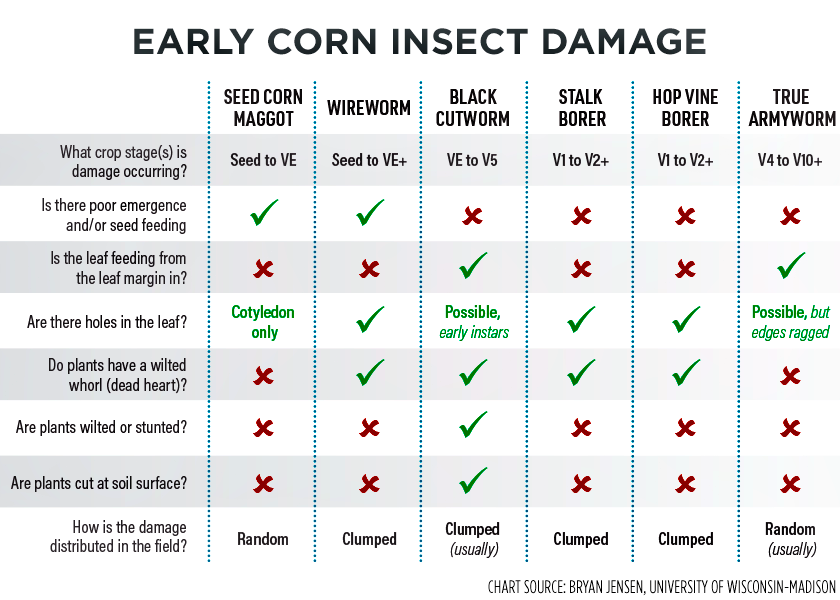A Perfect Storm for Increased Insect Pressure in Corn

The combination of a mild winter and spring windstorms coupled with farmers’ cultural practices are creating the potential for increased insect pressure in corn this season.
Though no alarms are sounding, enough factors are in place that agronomists and entomologists are raising the caution flag.
Topping the list of concerns is the outlook for western and northern corn rootworm pressure. High numbers of beetles were trapped last year in fields monitored by the Corn Rootworm IPM Regional Working Group, composed of university, industry and government personnel across the U.S. and Canada.
“The most pressing concern is the ongoing development of resistance in both western and northern corn rootworm to pyramided Bt trait packages,” says Nick Seiter, research entomologist at the University of Illinois. “Presumably, the recent increase in the population of these species in these areas is due to their increasing ability to overcome Bt corn.”
Fields Most At Risk
The areas Seiter references are parts of Iowa, northern Illinois, southern Wisconsin and Minnesota, and Nebraska where growing continuous corn has been an ongoing practice.
The corn rootworm beetle counts that were conducted in 562 corn and soybean field locations by Bayer Crop Science in 2022 also correspond to Seiter’s references.
“Not surprisingly, resistance is most intense in those same areas,” he says.
That doesn’t mean every corn grower in those areas will see damaging rootworm pressure.

“The information can seem a bit inconsistent sometimes, depending on where we’re talking about,” Seiter says. “If you’re in DeKalb County, you’re going to agree with us that corn rootworm is a significant problem, but if you’re in Champaign County you might say, ‘What are you talking about, man? I haven’t worried about corn rootworm in years.’”
For that latter group of farmers, Ken Ferrie cautions that he is seeing an uptick of corn rootworm in fields planted to non-Bt hybrids. He says the best action to take now is to conduct root digs and evaluate feeding. Severe pruning of a single root node can contribute up to 15% yield loss.
“Take pictures of the roots and put them in a file, so you can make comparisons the next couple of seasons to see if the feeding gets worse,” Ferrie says. “If there is a lot of feeding, that’s a warning shot for farmers planting traited corn that they’re experiencing some resistance and need to change up what they’re doing.”
Black Cutworm Concerns
Windstorms moving north from Southern states carried large numbers of black cutworm (BCW) moths into the Midwest this spring. Ferrie says corn growers who had cover crops, heavy residue or early-season weed pressure need to be vigilant.
“Be checking those fields that had green vegetation,” he advises. “Once black cutworm eggs are laid, they’re going to hatch and be a problem (even if we cleaned up our cover crops or addressed the weeds) and especially if you planted a week or two later than usual.”
University of Missouri Extension recommends using a rescue insecticide treatment for BCW when 2% to 4% of corn seedlings in a field are cut below ground and/or when 6% to 8% of plants are fed upon or cut above ground.
Ferrie encourages farmers to scout for BCW and be ready to take action until corn passes the four-leaf stage.

True Armyworm Advances
True armyworm larvae are voracious feeders and can quickly move through a cornfield.
For treatment, Erin Hodgson and Adam Sisson, Iowa State University Extension specialists, recommend using foliar insecticide when 10% or more of plants (VE to V2) are injured and larvae are less than ¾" long.
When corn is at V7 to V8, they suggest treatment only if larvae are ¾" long with more than eight per plant and when 25% of the leaf has been removed. At this size, larvae are expected to feed for another week and might cause more injury and warrant a rescue insecticide treatment.
If you planted corn with Bt traits, don’t assume they will provide adequate protection against true armyworm, cautions Brent Tharp, technical product manager for Wyffels Hybrids.
“Nearly all Bt corn hybrids either control or suppress fall armyworm, but not true armyworm,” Tharp says, noting these are two different insects.
“True armyworm is a pest of late spring and summer, while fall armyworm is typically present late summer or fall,” he says.

Be The Early Bird
Bryan Jensen, University of Wisconsin-Madison entomologist, put together a practical chart of eight early-season insects to help corn growers troubleshoot potential injury issues now (see above).
He has listed classic symptoms for each species and cautions that each insect can have multiple symptoms.
Along with that, he has listed the typical distribution for each insect, which can be altered based on field conditions and/or crop history.
As always, he adds, when troubleshooting insect damage, walk a representative part of the field, stay unbiased and look at several plants before reaching a diagnosis.







